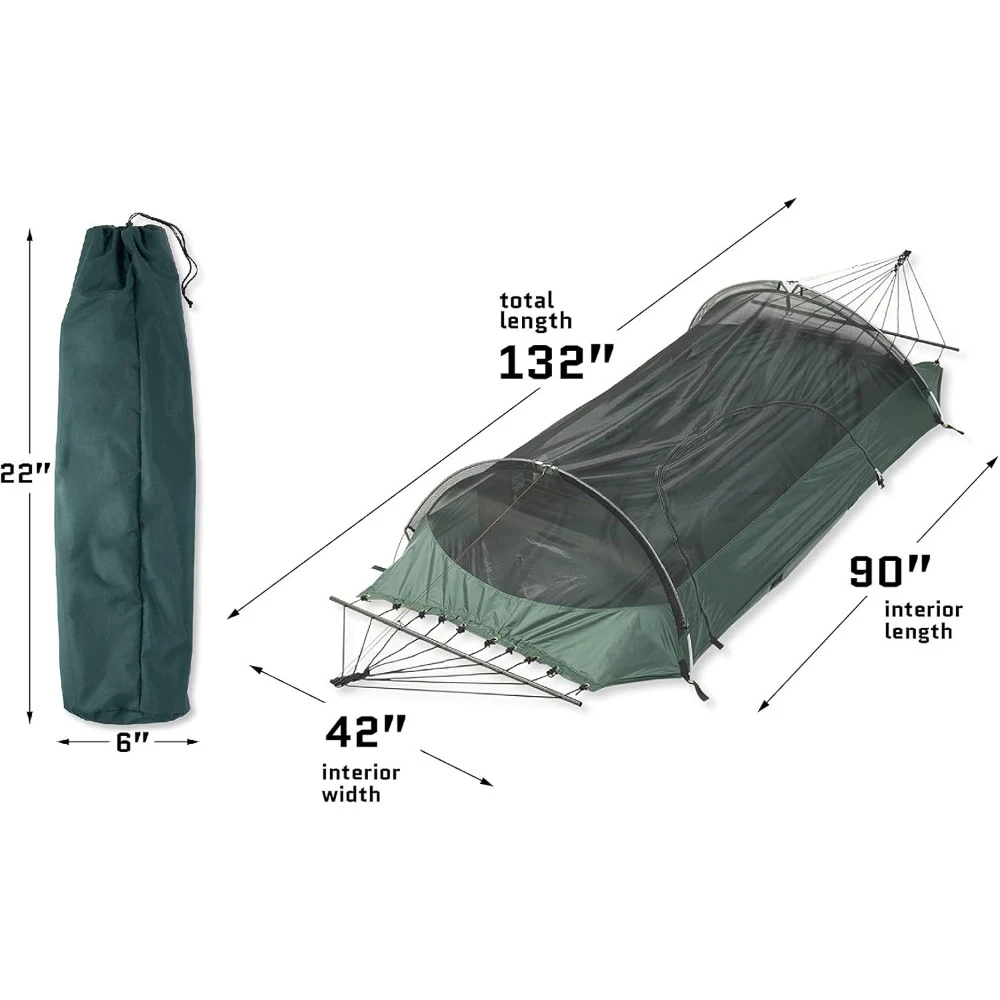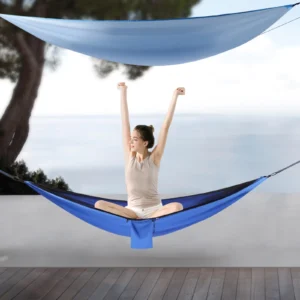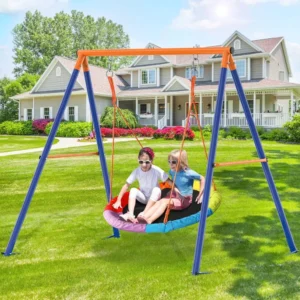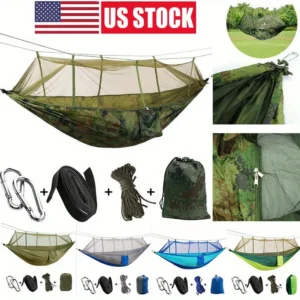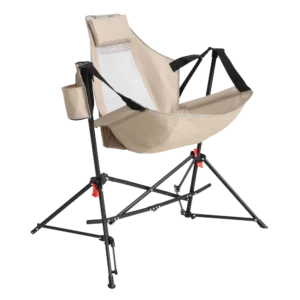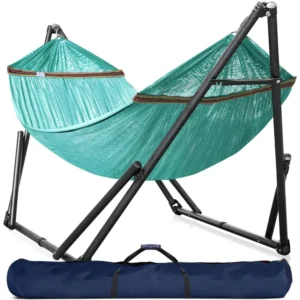The Importance of Hammock Transport Ease
In today’s fast-paced world, the ability to easily transport your hammock can make the difference between regular relaxation and a bulky item that stays in storage. Modern outdoor enthusiasts increasingly value gear that doesn’t weigh them down or take up precious space in their packs.
Portability directly impacts how you enjoy your hammock across different activities:
- Backpacking: Every ounce matters when carrying gear for miles
- Traveling: Easily packable hammocks fit in suitcases for destination relaxation
- Day trips: Spontaneous outings become more enjoyable when your hammock isn’t a burden
- Commuting: Lightweight options can be carried to work for lunch breaks in nature
The psychological benefit of having an easily transportable hammock shouldn’t be underestimated. When your hammock is simple to pack and carry, you’re much more likely to bring it along, creating opportunities for relaxation you might otherwise miss. This accessibility factor has contributed significantly to the recent 27% growth in hammock popularity among outdoor recreationists.
Traditional hammocks often weigh 3-4 pounds (1.4-1.8 kg), while modern portable options can weigh as little as 7 ounces (198 grams) – a weight reduction that makes spontaneous hammocking much more practical. Finding the perfect balance between indoor outdoor hammock placement and portability allows you to enjoy your hammock in various environments without sacrificing convenience.
For those specifically seeking transport-friendly options, exploring our selection of portable hammocks stands can provide solutions that combine stability with easy mobility.
Key Material Innovations for Lightweight Hammocks
The foundation of hammock portability begins with materials that balance weight, strength, and durability. Recent innovations have dramatically reduced hammock weights without sacrificing structural integrity.
Ripstop Nylon Varieties
Ripstop nylon remains the gold standard for portable hammocks due to its impressive strength-to-weight ratio. The “D” rating (denier) indicates thread thickness:
- 70D Ripstop: Offers excellent durability with moderate weight; ideal for regular use
- 40D Ripstop: Strikes a balance between durability and weight reduction; popular among weekend adventurers
- 20D Ripstop: Ultra-lightweight option favored by minimalists and long-distance hikers
A 40D ripstop hammock typically weighs about 4 ounces (113 grams) less than a comparable 70D version, a significant saving for weight-conscious users.
Parachute Nylon
Often called “parachute silk,” this material offers:
* Excellent breathability for comfort in warm conditions
* Good weight-to-strength ratio
* Natural stretch that enhances comfort
* Moderate durability suitable for casual use
However, it generally doesn’t pack down as small as high-performance ripstop options.
Specialized Polyester Blends
Newer polyester hammock materials provide advantages like:
* Superior resistance to UV degradation
* Less stretch when wet compared to nylon
* Faster drying times
* Competitive weight profiles
Premium Ultralight Options
For the ultimate in weight savings, Dyneema Composite Fabric (formerly known as Cuben Fiber) represents the cutting edge:
* Exceptional strength-to-weight ratio
* Virtually zero stretch
* Waterproof properties
* Extremely packable
| Material | Weight (oz/sq yd) | Strength | Packability | Price Point |
|---|---|---|---|---|
| 70D Ripstop | 2.1-2.3 | Excellent | Good | $ |
| 40D Ripstop | 1.5-1.7 | Very Good | Very Good | $$ |
| 20D Ripstop | 1.1-1.3 | Good | Excellent | $$ |
| Parachute Nylon | 1.9-2.2 | Good | Moderate | $ |
| Polyester Blend | 1.8-2.0 | Very Good | Good | $$ |
| Dyneema (DCF) | 0.5-1.0 | Superior | Superior | $$$$ |
The ideal material choice depends on your priorities—ultralight backpackers might prefer the weight savings of 20D or Dyneema, while more frequent users might benefit from the durability of 40D or 70D options. Our selection of ultralight camping hammock sets showcases the best lightweight materials currently available.
Compact Packability: Understanding Stuff Sack Designs
How small your hammock packs down is directly related to its material properties, but the stuff sack design plays an equally important role in maximizing portability.
Integrated Stuff Sacks
Many modern portable hammocks feature attached stuff sacks that offer several advantages:
* Cannot be lost or separated from the hammock
* Often positioned at the hammock’s edge for quick packing
* May double as a pocket for small items when the hammock is hung
* Eliminates the need for an additional storage component
Double-Ended Stuff Sacks (Bishop Bags)
These innovative designs have transformed hammock packability:
* Allow the hammock to be stuffed from both ends simultaneously
* Keep potentially wet suspension systems separate from the hammock body
* Often result in more compact packing than traditional stuff sacks
* Significantly reduce packing time
External Compression Options
For hammocks without quality integrated systems, external options include:
* Aftermarket compression sacks with cinch straps
* Stuff sacks with air purge valves
* Roll-top waterproof compression systems
Packed Size Comparison
Modern portable hammocks can compress remarkably well:
* Ultra-portable single hammocks: Grapefruit-sized (4×3 inches/10×7.5 cm)
* Standard portable singles: Softball-sized (5×3.5 inches/12.7×8.9 cm)
* Portable doubles: Cantaloupe-sized (6×4 inches/15×10 cm)
| Stuff Sack Type | Packing Speed | Packed Size | Water Resistance | Organization |
|---|---|---|---|---|
| Standard Attached | Good | Good | Basic | Minimal |
| Double-Ended | Excellent | Excellent | Good | Good |
| Compression | Moderate | Excellent | Varies | Moderate |
The best lightweight hammock sets combine quality materials with thoughtful stuff sack designs to maximize portability. For deeper insights into all aspects of minimalist designs, our ultimate guide ultralight hammock features provides comprehensive information.
Suspension Systems Engineered for Portability
While hammock body materials and packability are crucial, the suspension system often contributes significantly to overall weight and bulk. Modern portable suspensions have revolutionized hammock mobility.
Tree Strap Materials and Design
The material choice for straps directly impacts both weight and packed volume:
* Polyester webbing: Offers minimal stretch when wet, moderately lightweight
* Nylon webbing: Typically lighter but may stretch slightly when wet
* Dyneema webbing: Ultra-lightweight but comes at premium price point
Most importantly, portable straps should maintain tree-friendly width (1+ inch/2.5+ cm) to prevent damage to trees while distributing weight properly.
Quick-Deploy Suspension Options
Several suspension designs excel at balancing portability with easy setup:
Daisy Chain Systems
* Feature multiple connection points sewn into the straps
* Allow for rapid adjustment without knot knowledge
* Average setup time of 1-2 minutes vs 3-5 minutes for traditional rope systems
* Slightly heavier than minimalist options but offer superior ease of use
Whoopie Slings
* Ultra-lightweight adjustable suspension using Amsteel or similar cord
* Function on a constricting loop principle
* Provide precise length adjustment
* Require basic knowledge to use effectively
* Can reduce suspension weight by 50-60% compared to traditional webbing
Buckle-Based Systems
* Excellent for beginners with intuitive adjustment
* Offer tool-free setup and takedown
* Allow for quick mid-hang adjustments
* Slightly heavier than whoopie slings but easier to master
Lightweight Hardware Components
The connecting hardware also contributes to overall weight:
* Aluminum carabiners save 60-70% weight over steel equivalents
* Toggles and marlin spike hitches eliminate metal connectors entirely
* Continuous loops replace multiple connection points
* Titanium components offer premium weight savings at higher cost
Our quick-setup hammock sets feature suspension systems specifically designed for efficient transport and deployment.
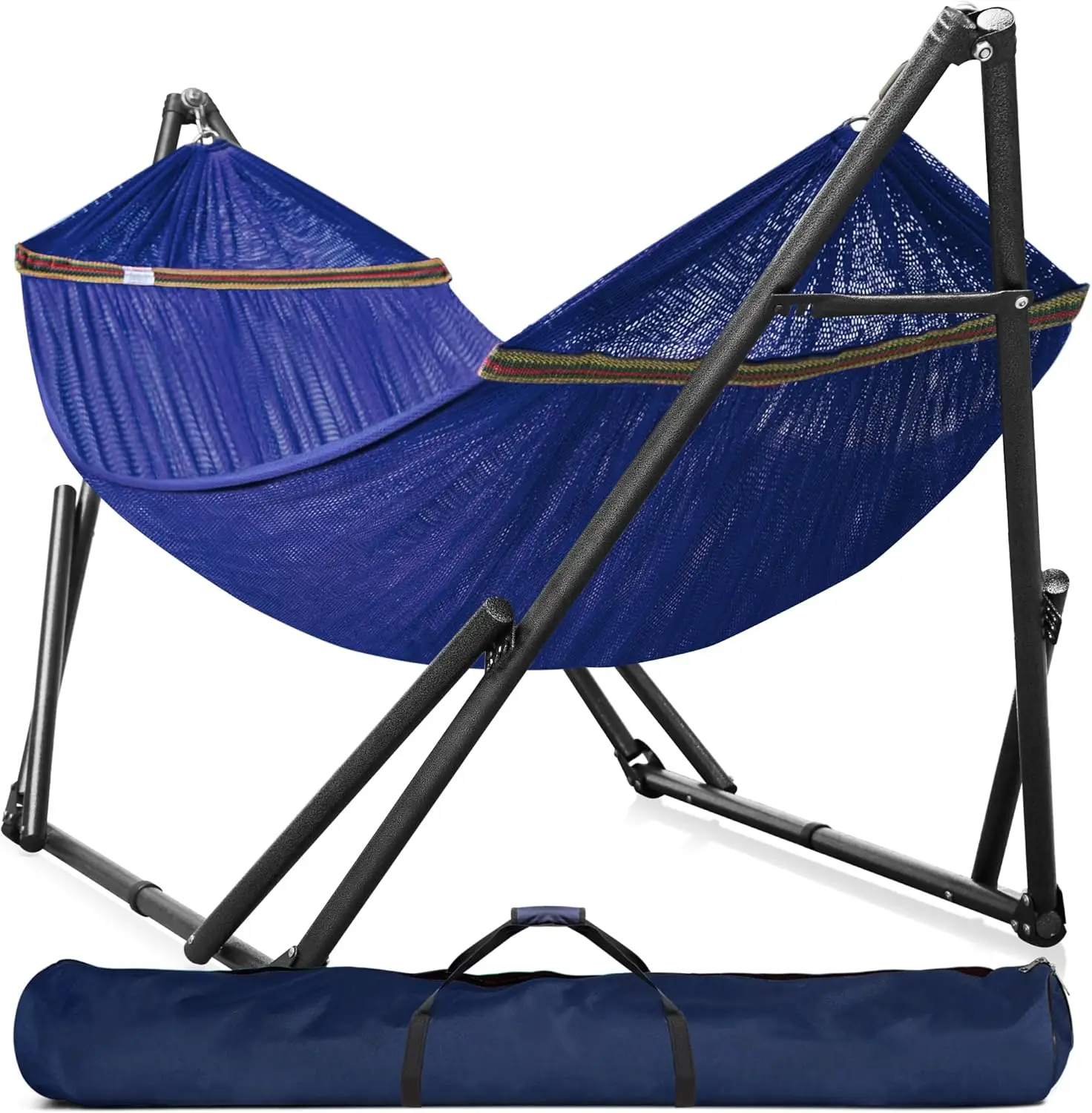
Balancing Durability with Transport Ease
Creating truly portable hammocks requires balancing minimal weight with sufficient durability. Quality construction techniques ensure that lightweight doesn’t mean fragile.
Construction Features for Long-Term Portability
Look for these construction elements that enhance durability without adding significant weight:
- Triple-stitched seams at critical connection points distribute forces evenly
- Bar-tacking (dense zig-zag stitching) at high-stress areas prevents tearing
- Reinforced edge channels protect fabric edges from fraying during packing/unpacking
- Double-layer sections at suspension connection points provide extra strength
- Quality control testing for weight ratings with appropriate safety margins
Material Considerations Beyond Weight
Durability factors to evaluate in lightweight materials include:
- Abrasion resistance – critical for materials that will be frequently stuffed and unstuffed
- UV protection – prevents degradation during extended sun exposure
- Water resistance – affects material performance and longevity in damp conditions
- Tear strength – more important than tensile strength for real-world durability
Identifying Quality Construction
Signs of quality construction in portable hammocks include:
* Consistent stitching with no loose threads
* Reinforced gathering methods at hammock ends
* Clean, finished seams that won’t unravel
* Appropriate weight ratings with safety margins
* Warranty coverage that indicates manufacturer confidence
Understanding the basics of hammock installation requirements safety guide helps ensure you maintain your portable hammock properly, extending its serviceable life regardless of how frequently you pack and transport it.
Smart Accessories That Enhance Portability
Beyond the hammock itself, carefully selected accessories can significantly improve overall transport ease without adding unnecessary bulk.
Specialized Carrying Solutions
Several carrying options enhance portability beyond basic stuff sacks:
* Compression straps that attach to backpack exteriors
* Ultralight ditty bags that organize components
* Multi-compartment stuff sacks that separate clean/dirty or wet/dry components
* Carabiner-compatible attachment points for external carrying
Lightweight Hardware Upgrades
Replacing standard components with lightweight alternatives delivers cumulative weight savings:
* 7075-T6 aluminum carabiners (23g) vs. steel carabiners (85g)
* Dyneema continuous loops (5g) vs. standard webbing loops (15g)
* Titanium toggles (7g) vs. aluminum connectors (20g)
* Carbon fiber spreader bars (45g) vs. aluminum bars (120g)
Integrated Component Systems
All-in-one solutions offer surprising space and weight efficiency:
* Built-in bug nets eliminate separate components
* Integrated weather protection reduces carried items
* Attached underquilts simplify packing routines
* Ridge lines that double as gear organizers
Our camping hammock sets bug net provide excellent examples of integrated systems that maintain portability while adding functionality.
Camping Hammock Sets with Bug Net, Ultralight Camping Hammock Sets
$139.72 Select options This product has multiple variants. The options may be chosen on the product pageFolding Hammock Sets, Quick Setup Hammock Sets
Price range: $305.52 through $583.27 Select options This product has multiple variants. The options may be chosen on the product pageCamping Hammock Sets with Bug Net, Complete Camping Hammock Systems
Price range: $82.73 through $97.96 Select options This product has multiple variants. The options may be chosen on the product pageFolding Hammock Sets, Lightweight Hammock Sets
$295.80 Select options This product has multiple variants. The options may be chosen on the product pageDouble / Two Person Hammock Sets, Folding Hammock Sets, Heavy Duty Hammock Sets
Price range: $323.71 through $486.23 Select options This product has multiple variants. The options may be chosen on the product page
Matching Hammock Portability Features to Your Adventure Style
Different activities demand different levels of portability. Understanding your specific needs helps select the most appropriate features for your situation.
For Ultralight Backpackers/Thru-Hikers
When every ounce matters over long distances:
- Priority features: Sub-1 lb (450g) total system weight, minimal packed volume
- Optimal materials: 20D-40D ripstop nylon or Dyneema blends
- Ideal suspension: Whoopie slings with tree straps under 3 oz (85g)
- Key considerations:
- Focus on multi-use components
- Eliminate redundant items
- Accept reasonable comfort trade-offs for weight savings
- Target packed size smaller than a 32 oz water bottle
For Casual Campers/Day Trippers
Balancing convenience with reasonable weight:
- Priority features: Quick setup, good durability, moderate weight
- Optimal materials: 40D-70D ripstop nylon with reinforced stress points
- Ideal suspension: Daisy chain straps with simple buckle systems
- Key considerations:
- Ease of setup may outweigh minor weight savings
- Durability for varied conditions
- Comfortable capacity for relaxed lounging
- Integrated stuff sack for hassle-free packing
For Travelers and Global Hammockers
Focusing on adaptability and packability:
- Priority features: Compact packed size, versatility, durability
- Optimal materials: 40D ripstop with reinforced points and weather resistance
- Ideal suspension: Adaptable systems with multiple attachment options
- Key considerations:
- TSA-friendly components (no sharp or suspicious items)
- Ability to set up in diverse environments with varied anchor points
- Cultural adaptability (subtle colors for urban settings)
- Resistance to varied climate conditions
Understanding the differences between indoor vs outdoor hammocks buyers guide can help further refine your selection based on your primary usage environment.
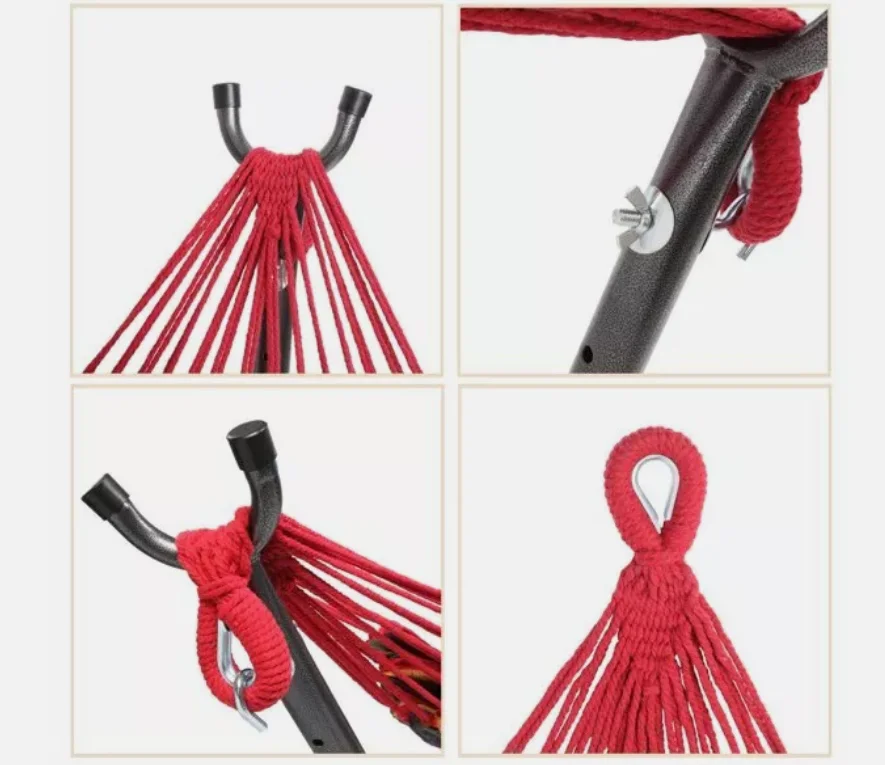
How to Evaluate Transport Ease When Shopping
When evaluating hammock portability claims, look beyond basic marketing to assess true transport-friendliness.
Decoding Product Specifications
Weight specifications can be particularly misleading:
* Hammock body weight: Just the fabric portion, excluding suspension
* Trail weight: Hammock with minimal suspension components
* Packed weight: Complete system including all components
* Shipping weight: Often includes packaging materials
Always identify which weight is being advertised—the difference can be substantial.
Understanding Packed Dimensions
Packed size claims require careful interpretation:
* Verify whether dimensions refer to compressed or loosely packed state
* Check if measurements include suspension components
* Consider the stuff sack design’s efficiency
* Watch for qualifiers like “approximately” or “compresses to”
Material Assessment Checklist
When evaluating materials for portability:
* Denier rating (lower = lighter but potentially less durable)
* Material type (ripstop nylon, polyester, specialty fabrics)
* Weave pattern (diamond ripstop often balances weight/strength better)
* Treatment coatings that might affect packed size
Verification Through User Experience
User reviews provide valuable insights beyond specifications:
* Look for comments specifically addressing ease of packing
* Note mentions of durability issues related to frequent packing
* Consider reports about long-term packability (does it maintain the same packed size over time?)
* Pay attention to comments about stuff sack quality and design
Understanding the features that make top features heavy duty hammock frames work can provide helpful contrast when evaluating lightweight options.
Is a Portable Hammock Right for You? Key Questions to Consider
Before investing in a portable hammock, consider these important questions:
Are ultralight hammocks comfortable enough for longer relaxation?
Most ultralight hammocks provide comparable comfort to heavier versions for average-sized users. The key difference is typically width rather than material – ensure the dimensions suit your relaxation style.
Can portable hammocks support larger individuals safely?
Yes, but pay close attention to weight ratings. Quality ultralight hammocks often support 300-400 lbs (136-181 kg) despite their minimal weight. Look for reinforced stitching and appropriate denier ratings.
What exactly constitutes an ‘ultralight’ hammock setup?
Generally, a complete ultralight hammock system (including suspension) weighs under 1 pound (450g). Ultra-ultralight setups can approach half that weight but may compromise on features or durability.
How do portable hammocks compare to traditional camping chairs for convenience?
Portable hammocks typically weigh less than quality camping chairs and often pack smaller, though they require suitable attachment points. Chairs offer stand-alone convenience but less comfort for longer relaxation sessions.
Do lightweight materials sacrifice too much durability for casual users?
Not necessarily. Modern 40D ripstop fabrics balance durability with weight savings suitable for most users. Only extreme ultralight materials (sub-20D) might require special care for casual use.
Creating the ideal outdoor relaxation space involves understanding how creating perfect hammock haven principles apply to portable setups.
Preserving Your Hammock’s Transport-Friendly Features
Proper care ensures your portable hammock maintains its transport-friendly characteristics over time.
Optimal Packing Technique
- Lay hammock flat and fold in half lengthwise
- Fold in half again if needed for narrower hammocks
- Roll tightly from one end toward the stuff sack (for attached sacks)
- Avoid cramming or stuffing hastily, which can damage materials
- For double-ended stuff sacks, feed equal amounts from both ends
Keeping Components Organized
- Store small hardware in dedicated pockets to prevent loss
- Use rubber bands or small stuff sacks for suspension components
- Consider color-coding components for quick identification
- Keep a packing checklist attached to your stuff sack
Maintenance for Continued Packability
- Air dry completely before long-term storage
- Clean with gentle soap and water when necessary
- Inspect seams regularly for signs of wear
- Store in a dry, cool location between uses
- Follow manufacturer guidelines for washing and maintenance
For comprehensive organization approaches, explore our guide on conquering clutter brilliant hammock storage for additional solutions.
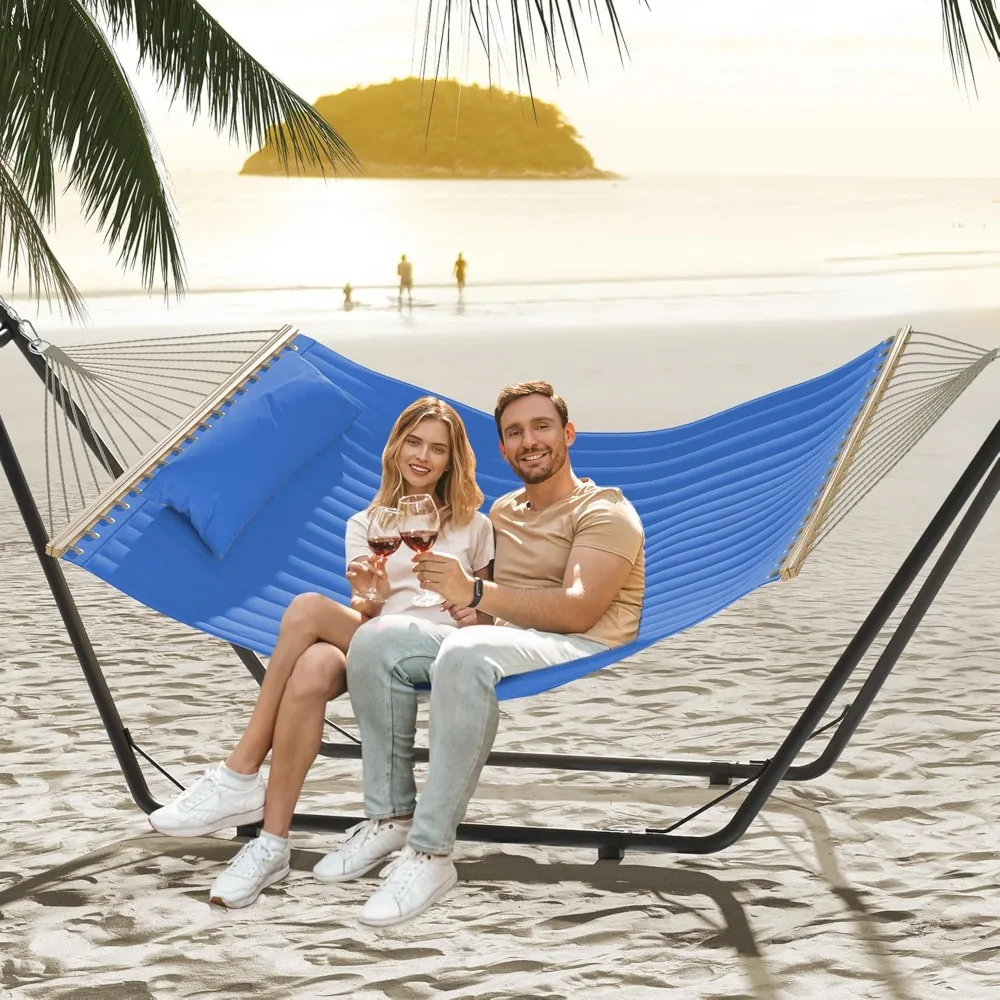
How Our Premium Portable Hammocks Enhance Your Outdoor Experience
At Outside Luxe, we approach hammock portability from a premium perspective—balancing transport ease with the luxurious comfort our customers expect. Our design philosophy ensures you never sacrifice relaxation quality for mobility.
We rigorously test every portable hammock for both packability and comfort, using real-world scenarios to validate performance. Our quality assurance process includes multiple pack/unpack cycles to verify long-term durability of materials and components.
What truly sets our portable hammocks apart is the attention to small details that enhance transport ease: precision-stitched stuff sacks, quality lightweight hardware, and carefully selected materials that balance weight with longevity.
For adventures that require maximum portability without compromising on comfort, our selection of folding hammock sets provides innovative solutions that transform from compact packages to luxurious relaxation platforms in minutes.
By focusing on both premium quality and thoughtful portability features, we ensure your Outside Luxe hammock becomes an essential companion for adventures near and far—not just another piece of equipment to carry, but a portal to relaxation you’ll actually want to bring along.

